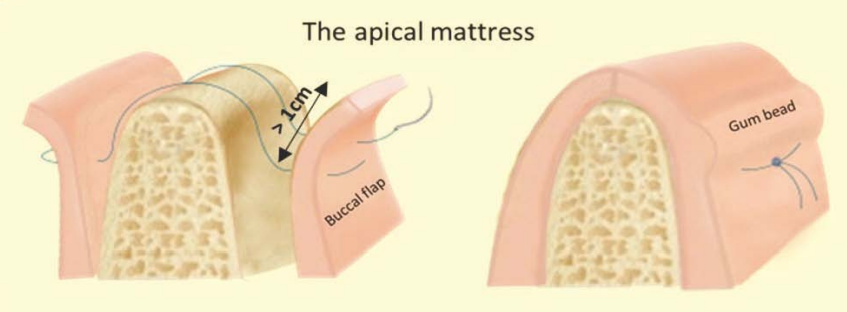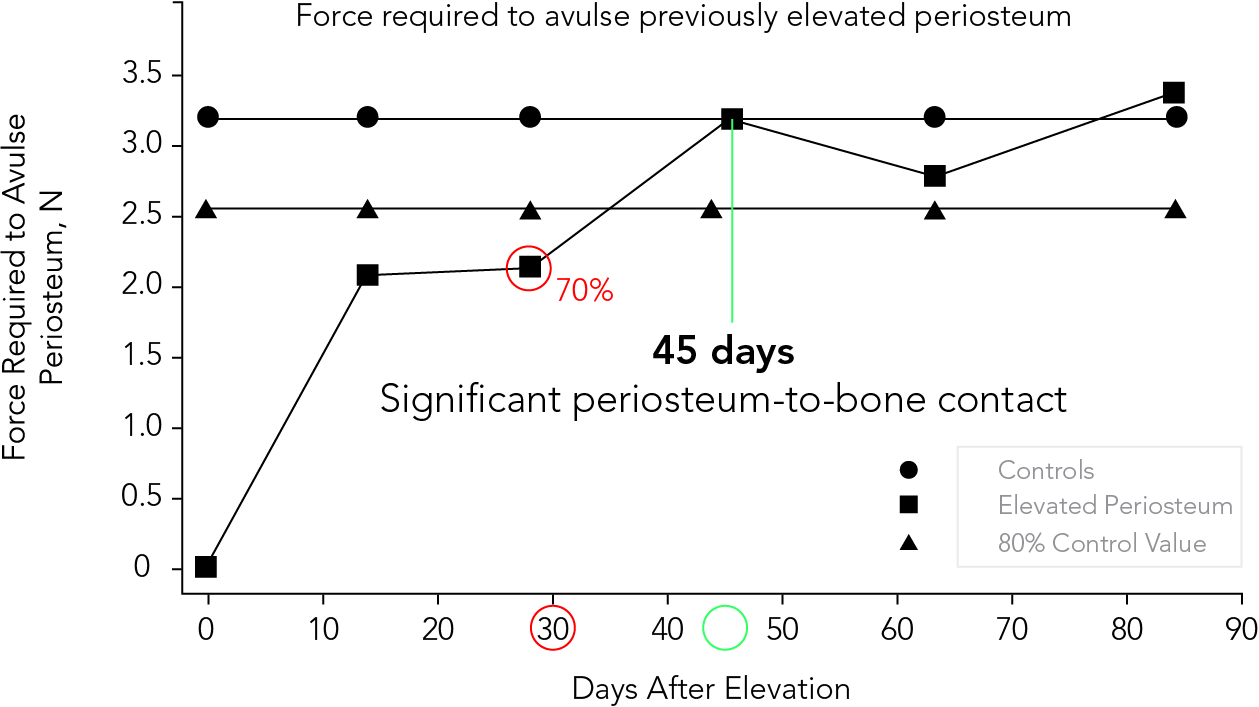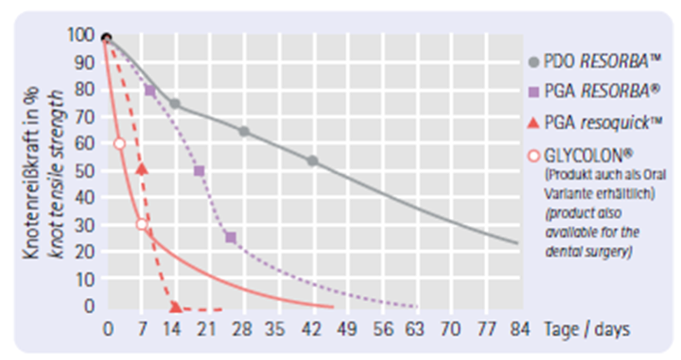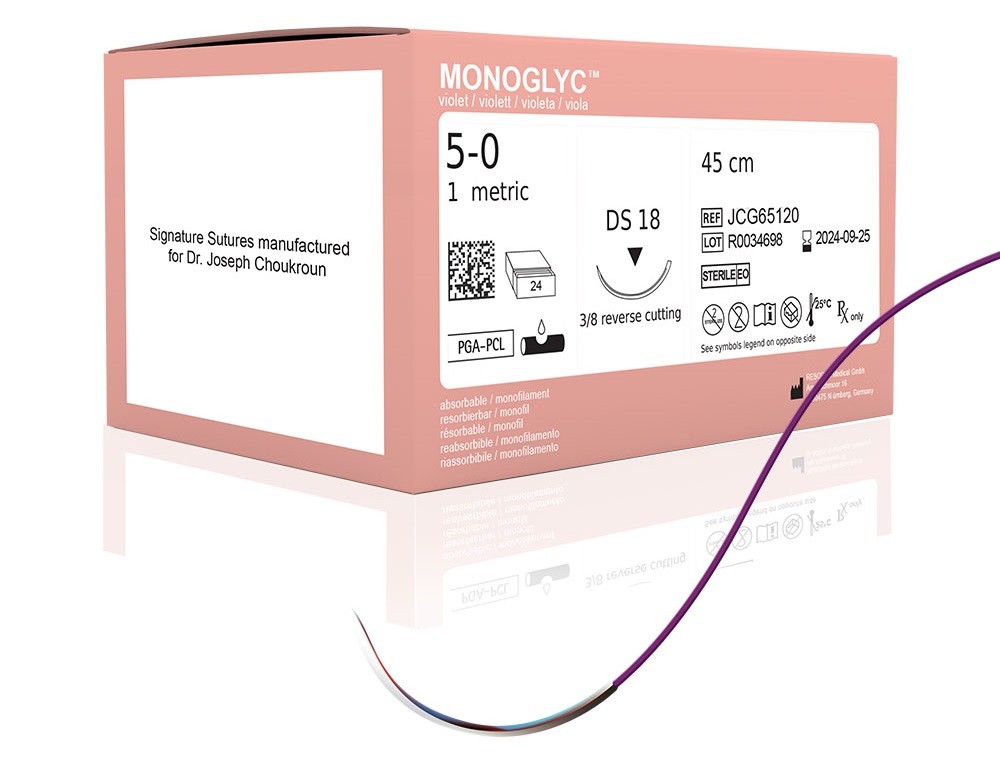A new suture and suturing technique that will help you to remove tension & mobility of the buccal flap

DID YOU KNOW?
It takes 4 to 6 weeks to obtain significant reattachment of the periosteum.
The suture must stay in place for a least 4 weeks.

Technique by Dr. Choukroun and Dr. Surmenian
Periosteum reattachment requires a lot of time.
When a flap is raised, it becomes mobile interrupting the blood supply causing bone loss. Mobility also creates tension which will be eliminated when reattachment occurs. Most suture materials are removed after 1 to 2 weeks. This is not enough time for the body to achieve suitable reattachment of the periosteum. If the periosteum is not stable, the flap will remain mobile and there will be tissue tension.

The Apical Mattress - Technique Benefits
- Helps remove tension & mobility of the buccal flap
- Decreases soft tissue ischemia
- Promotes faster healing & increased soft tissue thickness
- Greatly decreases the risk of dehiscence
- Faster revascularization of the cortical bone
- Faster revascularization of the grafted bone
- Prevention of the native bone resorption
- Prevention of the bone graft resorption
Monoglyc™: a suture that remains strong, stays plaque free and resorbs
Using a monofilament instead of a braided suture will avoid plaque formation and inflammation.


Which kind of monofilament should be used ?
Monofilament can be absorbable or non-absorbable.
Non-absorbable: After 4 weeks, the monofilament will be embedded into the flap and not so easy to remove.
Absorbable: Monoglyc™, as an absorbable monofilament suture, is an excellent choice!

Short-Term Tissue Support MONOGLYC®
Revision: Characteristics of Suture Material

Absorbable:
Increasing loss of mass or volume of the suture material
Breaking strength:
Limit of breaking strength at which the suture material breaks
Capillarity:
Volume of fluid absorbed along the suture line
Elasticity:
Ability of the material to return to its original shape after deformation
Fluid absorption:
Ability of the material to absorb fluid after immersion
Knot tearing strength:
Ability of the material to absorb fluid after immersion
Knot strength:
Ability of the material to absorb fluid after immersion
Memory effect:
Special ability of the suture material to maintain or return to its original form
Flexibility:
Easy handling of the suture material; possibility of adjusting the knot tension; secure fit of the knot
Tear strength:
Ability of the material or tissue to withstand deformation or breakage


